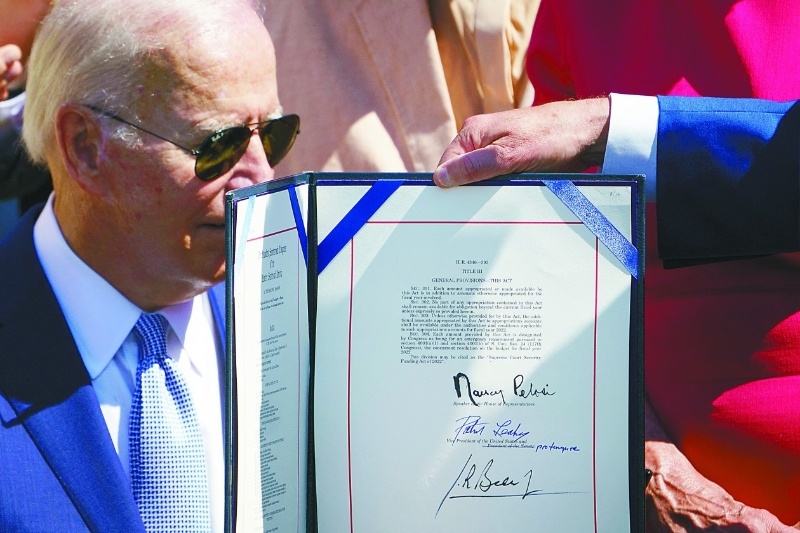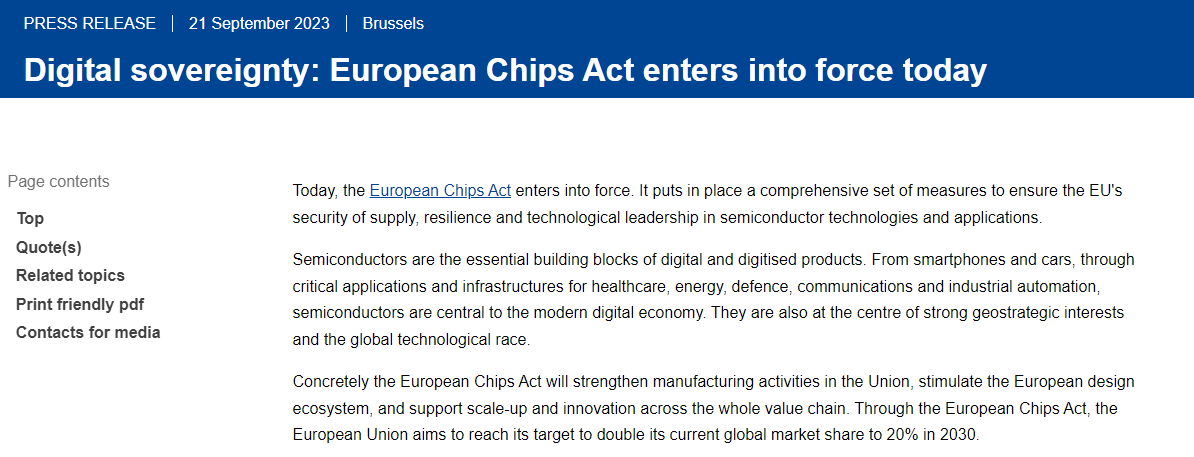U.S. Semiconductor Manufacturing Returns Strongly Intel Will Receive More Than 10 Billion U.S. Dollars in Subsidies
According to foreign media reports, the U.S. Biden administration is negotiating with Intel Corporation to award it more than $10 billion in chip subsidies.。The negotiations are still ongoing.。
According to foreign media reports, the U.S. Biden administration is negotiating with Intel to receive more than $10 billion in chip subsidies.。Relevant sources said that the U.S. move is due to its intention to establish an independent semiconductor industry chain, extending this olive branch in exchange for Intel's assistance.。
At present, the negotiations are still under way, and the subsidy route may include loans and direct grants, but the ratio of the two is not yet clear.。In response, the U.S. Department of Commerce and Ter declined to comment.。
Create "high-end manufacturing return"
In 2022, President Joe Biden signed the Chip and Science Act, with $39 billion in direct grant subsidies and $75 billion worth of special loans and loan guarantees, with the related disbursements overseen by the U.S. Department of Commerce.。

The bill aims to expand the production of high-end chips within the United States, especially high-performance chips below the 5nm high-end process, and attract the world's top semiconductor companies to produce chips in the United States by funding chip production and related supply chains, in order to comprehensively enhance the competitiveness of the United States in the global chip manufacturing field and reduce dependence on external supply chains.。
It is reported that the U.S. government's goal is to establish at least two leading manufacturing clusters by 2030, and gradually become a chip power for the return of high-end manufacturing such as chips.。Since Biden took office, global chip companies have invested more than $230 billion in the U.S., and if the grant is successfully disbursed, it will be the largest financial support to date.。
So far, the Commerce Department has made public two smaller grants, and Minister Gina Raimondo said earlier this month that the Commerce Department plans to release a number of funding plans within two months to promote the development of the semiconductor manufacturing industry.。
Intel returns "only owes the east wind"
Intel has dominated the chip industry for years, but has recently fallen behind Asian rivals TSMC and Samsung Electronics, which have invested $40 billion and $17.3 billion, respectively, and have their own plants in Arizona and Texas.。
Intel CEO Pat Gelsinger has repeatedly lobbied the U.S. government over the subsidies, saying the funds will put Intel on track to return to the industry giant's throne。

Earlier, Intel spent tens of billions of dollars to invest in its long-term plants in Arizona and New Mexico, and launched construction of a new plant in Ohio, saying the plant is expected to become the world's largest chip factory.。But completion of the plant has been delayed until 2026 due to a slowing chip market and slow federal funding.。
Micron Technology and Samsung Electronics also submitted applications for the program.。According to statistics, more than 170 enterprises have applied for the subsidy, but only 2 have passed。
European chip autonomy has a long way to go
In 2023, the EU will do the same, with the introduction of the European Chip Act and nearly $50 billion in subsidies, aimed at expanding the production of microchips in Europe, building an independent semiconductor industry chain and reducing dependence on other markets; it also hopes to increase the EU's share of the global chip market from less than 10% to 20%.。

In this regard, ASML executives, the lithography machine manufacturer, believe that in the semiconductor industry, cooperation is basically the only option, and the possibility of establishing a completely independent industrial chain is very small.。
Currently, most of the world's high-end semiconductors come from the United States, South Korea and Taiwan, and Europe is far behind in this regard.。In order to achieve the goal, the EU will strive to attract more semiconductor manufacturers to produce in Europe, such as Intel, Infineon and TSMC, but there is still a long way to go.。
·Original
Disclaimer: The views in this article are from the original Creator and do not represent the views or position of Hawk Insight. The content of the article is for reference, communication and learning only, and does not constitute investment advice. If it involves copyright issues, please contact us for deletion.